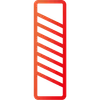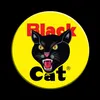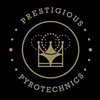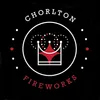The Science Behind Fireworks
Fireworks—they're a spectacle to behold, aren't they? Lighting up the night sky with their vibrant hues and patterns, they've been a staple in celebrations around the globe for centuries. But have you ever paused to ponder the science behind these dazzling displays? We’ve spent years delving into the intricacies of fireworks, from the basic components that give them their structure to the physics and chemistry that propel them into the sky and create their stunning visuals. In this article, we'll explore the fascinating world of fireworks, touching on their environmental impact, the artistry involved, and the crucial aspect of safety. We'll also delve into the role of professionals in creating these mesmerising displays.

The Basic Components of Fireworks
Anatomy of a Firework
Fireworks, in essence, are missiles designed to explode in a very controlled way, producing bangs and bursts of brightly coloured light. The structure of a firework is quite fascinating. It's made up of several key components that each play a crucial role in its operation. The main components include the fuse, lift charge, burst charge, and stars.
The fuse is the ignition source for the firework. It's a type of slow-burning cord that, when lit, allows time for the person lighting the firework to move to a safe distance. The lift charge is a type of gunpowder that propels the firework into the air when ignited by the fuse. The burst charge, also a type of gunpowder, is responsible for the explosion you see in the sky. Lastly, the stars are small, individually packed pyrotechnic compositions that determine the colour and pattern of the firework when it explodes.
Role of Metal Salts and Gunpowder
The role of metal salts and gunpowder in fireworks is crucial. Gunpowder, made mainly from saltpetre, pine resin, and charcoal, is the primary propellant in fireworks. When ignited, it undergoes a rapid chemical reaction that produces a large volume of hot gas, propelling the firework into the sky.
Metal salts, on the other hand, are responsible for the beautiful colours you see during a firework display. When heated, different metal salts emit different colours. For instance, sodium compounds give yellow and orange, copper and barium salts give green or blue, and calcium or strontium make red. The specific colour each metal salt produces is a result of the temperatures at which their electrons get excited and emit light.
The Physics of Firework Displays
Newton's Third Law and Fireworks
The physics of fireworks is as fascinating as their chemistry. One of the fundamental principles at play is Newton's third law of motion, often summarised as "for every action, there is an equal and opposite reaction." This principle is what propels the firework into the sky. When the gunpowder inside the firework combusts, it produces hot gases that rapidly expand and are expelled downward. According to Newton's third law, the force of these gases firing downward creates an equal and opposite force that propels the firework upward into the sky.
The Role of Fuse
The role of fuses in fireworks is crucial for their ignition and launch. The fuse serves as the ignition source for the firework. It's a slow-burning cord that, when lit, provides enough time for the person lighting the firework to move to a safe distance. The burning fuse then reaches the lift charge, a type of gunpowder that propels the firework into the sky when ignited. The fuse continues to burn into the core of the firework, where it ignites the burst charge. This results in the explosion we see in the sky, releasing the stars that create colourful patterns.
In essence, the fuse acts as a carefully timed trigger, ensuring that the various components of the firework ignite in the correct sequence. This is vital for the firework to function correctly and safely, and it's another example of the intricate science behind these spectacular displays.

The Chemistry of Fireworks
Chemical Reactions in Fireworks
When it comes to the chemistry of fireworks, it's all about the reactions that happen when they explode. Fireworks are essentially controlled explosions containing a variety of chemicals to create the colours and effects we see in the sky. The main components of a firework are a fuel, an oxidizer, and a colour-producing chemical.
The fuel and oxidizer are mixed together to form what's called the "stars" of the firework. When the firework is ignited, the fuel reacts with the oxidizer in a process called combustion. This reaction generates a lot of heat and gas, which causes the firework to explode. The heat energy is absorbed by the colour-producing chemicals, exciting their electrons. When these electrons return to their original energy level, they release energy in the form of light. This is what we see as the colourful explosion in the sky.
The combustion reaction in fireworks is an example of an exothermic reaction, where energy is released in the form of light and heat. It's a rapid reaction, which is why fireworks explode so quickly and brightly. The exact colours and effects seen in a firework display depend on the specific chemicals used.
How Fireworks Get Their Colours
The colours you see in a fireworks display are all thanks to different metal salts. These salts are compounds made up of a metal and a non-metal. When the salts are heated during the explosion, the energy absorbed excites the electrons in the metal ions, causing them to emit light of a specific colour.
For example, strontium salts are used to produce red colours in fireworks. When heated, the strontium ions emit light in the red part of the spectrum. Similarly, barium salts are used to create green colours. The light emitted by barium ions falls in the green part of the spectrum. Other metals like copper produce blue colours, and sodium produces yellow colours.
The intensity and shade of the colour can be adjusted by changing the amount and type of metal salt used. By combining different salts, fireworks manufacturers can create a wide range of colours and effects. It's a beautiful example of how chemistry can create art in the sky.
The Art of Fireworks
Aesthetics of Fireworks
We don’t just love fireworks because of the science behind their creation and launch (though there are some unusual science and research-driven uses for fireworks); they are also about the art they create in the sky. The visual appeal and beauty of fireworks are what make them a staple at celebrations worldwide. The artistry of fireworks lies in their ability to paint the night sky with a symphony of colours and patterns, creating a spectacle that captivates audiences of all ages. The aesthetics of fireworks are a combination of careful design, precise timing, and the use of different types of fireworks to create a cohesive display. The beauty of a fireworks display is subjective, much like any form of art. Some may find the large, booming fireworks the most beautiful, while others may prefer the subtler, intricate patterns created by smaller fireworks. The aesthetics of fireworks are a testament to the skill and creativity of the pyrotechnicians who design them.
Role of Stars in Creating Effects
The stars in fireworks play a crucial role in creating the various effects seen during a fireworks display. These stars are small, pellet-like substances that contain the metal salts responsible for the colours in fireworks. When ignited, these stars burn brightly and create the sparkling effects we see. The arrangement of these stars within the firework can determine the pattern that the firework creates in the sky. For example, if the stars are arranged in a circle, they will explode in a circular pattern. The size, composition, and arrangement of the stars all contribute to the visual effects of the firework. The role of stars in fireworks is a blend of science and art, combining chemical reactions with artistic design to create stunning visual displays.
Firework Safety
Importance of Safety in Fireworks
When it comes to fireworks, safety is paramount. Fireworks, while beautiful and exciting, are essentially controlled explosives. Their handling and use come with inherent risks that can lead to serious injuries if not properly managed. Therefore, it's crucial to understand and adhere to safety guidelines when dealing with fireworks. This includes keeping a safe distance, using them in a clear, open space away from flammable materials, and never attempting to relight a "dud" firework. It's also important to remember that fireworks should only be used by adults, and children should always be supervised around them. By following these safety measures, we can ensure that everyone enjoys the spectacle without any accidents or injuries.
Fireworks and Environment
Environmental Impact of Fireworks
Fireworks, while a spectacle to behold, have a significant environmental impact. When they burst into the sky, they propel a cocktail of chemicals into the atmosphere. The vivid colours we see in firework displays come from metallic compounds such as barium or aluminium, which can sometimes have negative impacts on animal and human health.
Another environmental aspect is noise pollution. Find out about quiet fireworks and browse our range of low-noise fireworks for a smaller impact in terms of volume.
Eco-friendly Fireworks
In response to these environmental concerns, advancements have been made in the development of eco-friendly fireworks. These fireworks use a clean-burning, nitrogen-based fuel, eliminating the need for a perchlorate oxidizer. Because there is little smoke, only small amounts of metal salts are needed to produce the brilliantly coloured flames. This firework innovation significantly reduces the amount of atmospheric pollution produced by some fireworks.
Role of Professionals in Firework Displays
Professional firework displays are a sight to behold. But behind the scenes, there's a lot of meticulous planning and execution involved. Professionals play a crucial role in ensuring these displays are not only spectacular but also safe. From the initial planning stages, where budgets, styles, and timings are discussed, to the detailed site survey that assesses current conditions and safety considerations, professionals are involved every step of the way. They also handle the layout of the display, ensuring the crowd is at a safe distance, and plan out the sequence of the show. On the day of the event, professionals are responsible for setting up the fireworks, fusing them into their correct sequences, and conducting pre-show tests. Their expertise and experience ensure that the firework display is a success, providing a beautiful spectacle for all to enjoy while maintaining the highest safety standards
In the journey through the science, art, and safety of fireworks, we've discovered that these spectacular displays are more than just a feast for the eyes but an evolution of technology over time. They're a symphony of physics, chemistry, and engineering, with each firework meticulously designed to ignite the night sky with dazzling colours and effects. We've also learned about the environmental implications of fireworks and the advancements in eco-friendly alternatives. But above all, we've underscored the importance of safety in handling and viewing these beautiful yet powerful displays. As we continue to marvel at these celestial spectacles, let's remember the science and artistry behind each burst of light and colour and always prioritise safety to ensure everyone can enjoy the show.
Browse our extensive range of fireworks—the largest in the North West! We’ve got top-class rockets, fountains, mines, Roman candles, Catherine wheels, and sparklers, but that’s just the tip of the iceberg. Browse our website today or give us a call with a question.
350 Barlow Moor Rd
Chorlton
Manchester, M21 8AZ
07810 222123
info@chorltonfireworks.com
























































